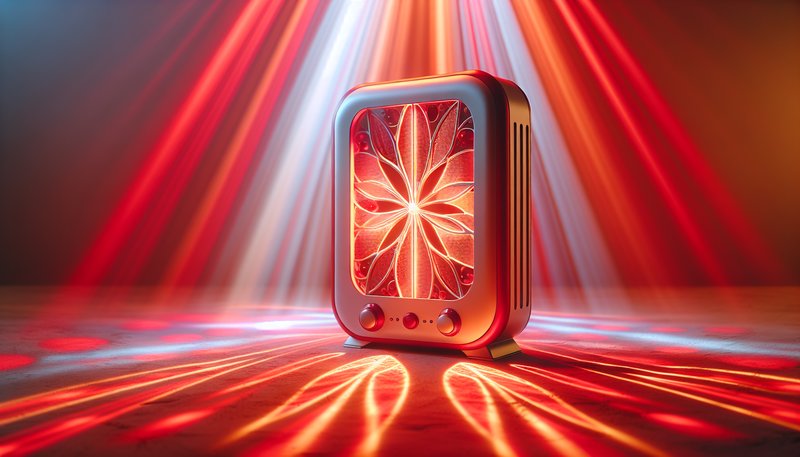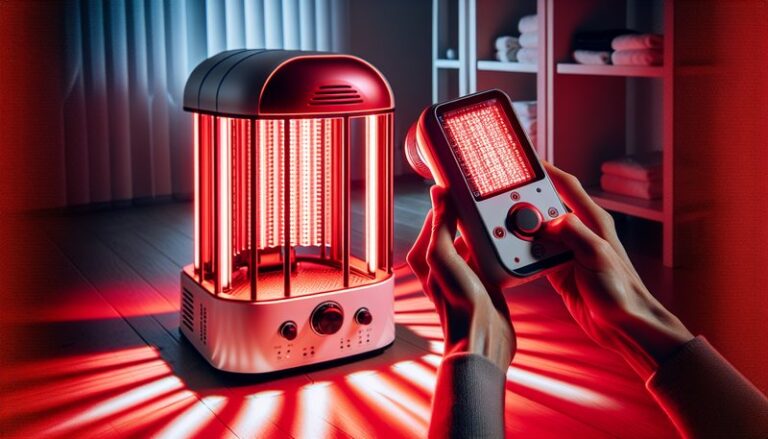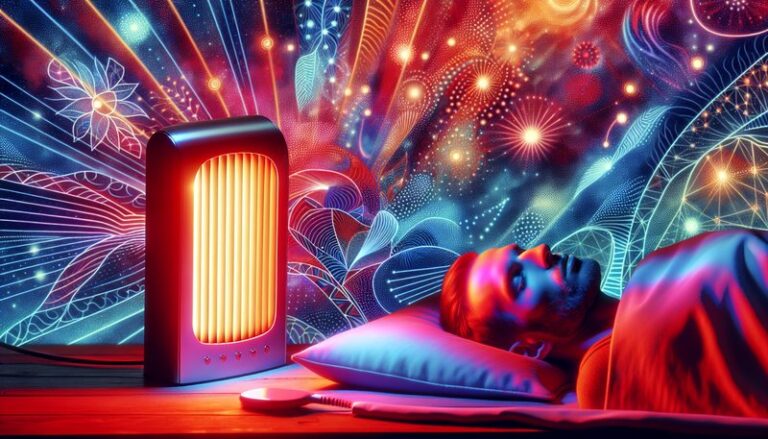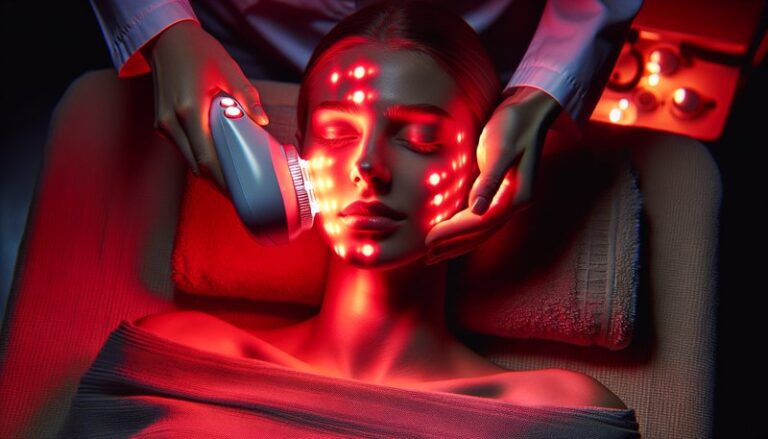Does Red Light Therapy Have Uv Rays?
Does Red Light Therapy Have UV Rays?
Are you curious about the implications of red light therapy and its relation to UV rays? Many people are exploring red light therapy for various health benefits, but there’s often confusion regarding its spectrum and safety.
This article will delve into whether red light therapy emits UV rays, explain what red light therapy entails, and explore its benefits, considerations, and alternatives. By the end of this read, you will have a clearer understanding of red light therapy and its implications for health.
Key Takeaways
- Red light therapy does not emit UV rays, making it a safer alternative to traditional UV light therapies.
- It is widely used for skin rejuvenation, pain relief, and wound healing.
- Considerations include skin type, treatment duration, and equipment used.
What is Red Light Therapy?
Red light therapy, also known as low-level laser therapy (LLLT) or photobiomodulation, involves exposing the body to low levels of red or near-infrared light. This treatment is utilized for a variety of medical and aesthetic purposes, including reducing inflammation, enhancing healing, and improving skin tone and texture.
During red light therapy sessions, wavelengths typically range from 600 to 1000 nanometers. Unlike other forms of light, these specific wavelengths are non-ionizing and do not produce heat or harmful effects associated with UV light.
The therapy works primarily by stimulating cellular function and increasing ATP production within the cells, leading to faster recovery and regeneration.
What are the Benefits of Red Light Therapy?
Red light therapy offers numerous advantages, which can be categorized to help readers understand its wide-ranging applications.
Skin Rejuvenation
Red light therapy is acclaimed for its ability to enhance collagen production, reduce wrinkles, and improve overall skin texture. Studies have shown that regular use can lead to a notable decrease in fine lines and an increase in skin firmness.
Pain Relief
Many users report significant pain relief with consistent red light therapy sessions. This treatment is particularly effective for conditions like arthritis, muscle soreness, and joint pain, thanks to its ability to reduce inflammation and promote healing in the affected areas.
Wound Healing
Red light therapy has been observed to accelerate wound healing by promoting increased blood flow and cellular regeneration. Clinical studies indicate faster recovery for patients undergoing red light treatments for surgical wounds or injuries.
Enhanced Muscle Recovery
Athletes commonly use red light therapy as part of their training regimen. By enhancing blood circulation and reducing inflammation, it can lead to quicker recovery times after intense workouts.
Improved Mood and Sleep
Emerging studies suggest that red light therapy might positively influence sleep quality and mood. By supporting the regulation of circadian rhythms, it may help those suffering from sleep disorders or mood-related issues.
Is it Possible to Use Red Light Therapy Safely?
Yes, red light therapy can be used safely for various purposes. One major appeal of this therapy is its non-invasive nature, alongside the absence of harmful UV rays associated with traditional phototherapy.
What are the Advantages of Using Red Light Therapy?
Red light therapy is advantageous for many reasons, including:
- Non-invasiveness: The procedure is painless and does not require incisions or injections.
- Minimal Side Effects: Compared to other treatments, red light therapy has a low risk of side effects.
- Convenient Application: It can be applied in various ways, such as at-home devices or professional treatments in clinics.
What are the Disadvantages of Using Red Light Therapy?
While beneficial, there are some disadvantages associated with red light therapy:
Discover Red Light Therapy Attire
- Cost of Equipment: High-quality red light devices can be expensive, though cheaper options are available.
- Time Commitment: Regular sessions may be needed for optimal results, which can be time-consuming.
- Results May Vary: Individual responses to treatment can differ significantly, causing varying rates of improvement.
What are the Things to Consider Before Using Red Light Therapy?
Before starting red light therapy, consider the following important factors:
Consultation with a Professional
It is advisable to consult with a healthcare professional prior to starting therapy, especially for those with serious health conditions or skin concerns.
Understanding Individual Skin Type
Different skin types may respond differently to red light therapy. Understanding your skin type can help in selecting the correct treatment parameters.
Device Quality
Ensuring you use a high-quality, reputable device is crucial for maximizing the benefits of red light therapy and ensuring safety.
Treatment Duration and Frequency
Determine the appropriate duration and frequency of treatment that will yield the best results based on initial assessments.
What are the Alternatives to Red Light Therapy?
If red light therapy isn’t the right fit for you, several alternatives offer similar benefits:
Heat Therapy
Heat therapy can relieve muscle pain and stiffness through increased blood flow, providing a comforting alternative.
Cold Therapy
For inflammation and acute pain, cold therapy (like ice packs) can reduce swelling and numb painful areas, serving as a contrasting option to light therapies.
Ultrasound Therapy
Ultrasound therapy uses sound waves to promote tissue healing, often utilized in physical therapy settings for deeper penetration compared to light therapy.
Microdermabrasion
For skin rejuvenation, microdermabrasion offers a mechanical exfoliation option, effective in improving skin texture and reducing signs of aging.
Conclusion: Is it Recommended to Use Red Light Therapy?
In summary, red light therapy is a promising treatment that stands out for its safety profile, as it does not emit harmful UV rays and offers a variety of health benefits. While it may not be suitable for everyone, its non-invasive nature and minimal side effects encourage many to consider incorporating it into their wellness routine. Always consult with a healthcare professional before starting any new therapy to ensure it aligns with your individual health needs.
Frequently Asked Questions
Does red light therapy cause any side effects?
Generally, red light therapy is considered safe with minimal reported side effects, such as temporary redness or discomfort in some users.
For more, see Post Red Light Therapy Guide
How long does it take to see results from red light therapy?
Results can vary based on the treatment purpose and individual responses. Some may notice improvements in skin appearance within a few sessions, while pain relief may take several weeks for consistent results.
Can I use red light therapy at home?
Yes, many at-home devices are available for red light therapy. It’s important to ensure that any device used is obtained from a reputable source and meets safety standards.
Is red light therapy suitable for all skin types?
Most skin types can benefit from red light therapy; however, individuals with specific skin conditions should consult with a healthcare professional for personalized advice before starting treatment.
How often should I use red light therapy for the best results?
Frequency can differ based on individual goals and device recommendations. Typically, sessions can range from two to three times per week to daily applications, depending on desired outcomes.






